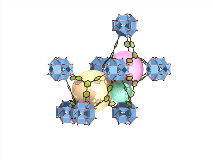Reticular chemistry provides access to three-dimensional (3D) or two dimensional (2D) porous materials that can immobilize molecular catalysts at well-defined positions. For example, MOFs (made from organic linkers and metal nodes) and COFs (made from covalently connected molecules) exhibit unique properties such as high surface area, tunable porosity, diversity in metal and functional groups, confinement effects and periodic metal/linker arrangements. These properties make MOFs and COFs as well as their derived materials attractive candidates for use as catalysts. In addition to that, it is also possible to take advantage of their host-guest properties that enable encapsulation of other catalysts in their structure.


